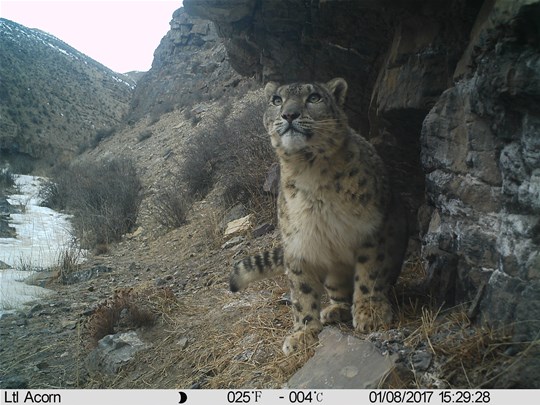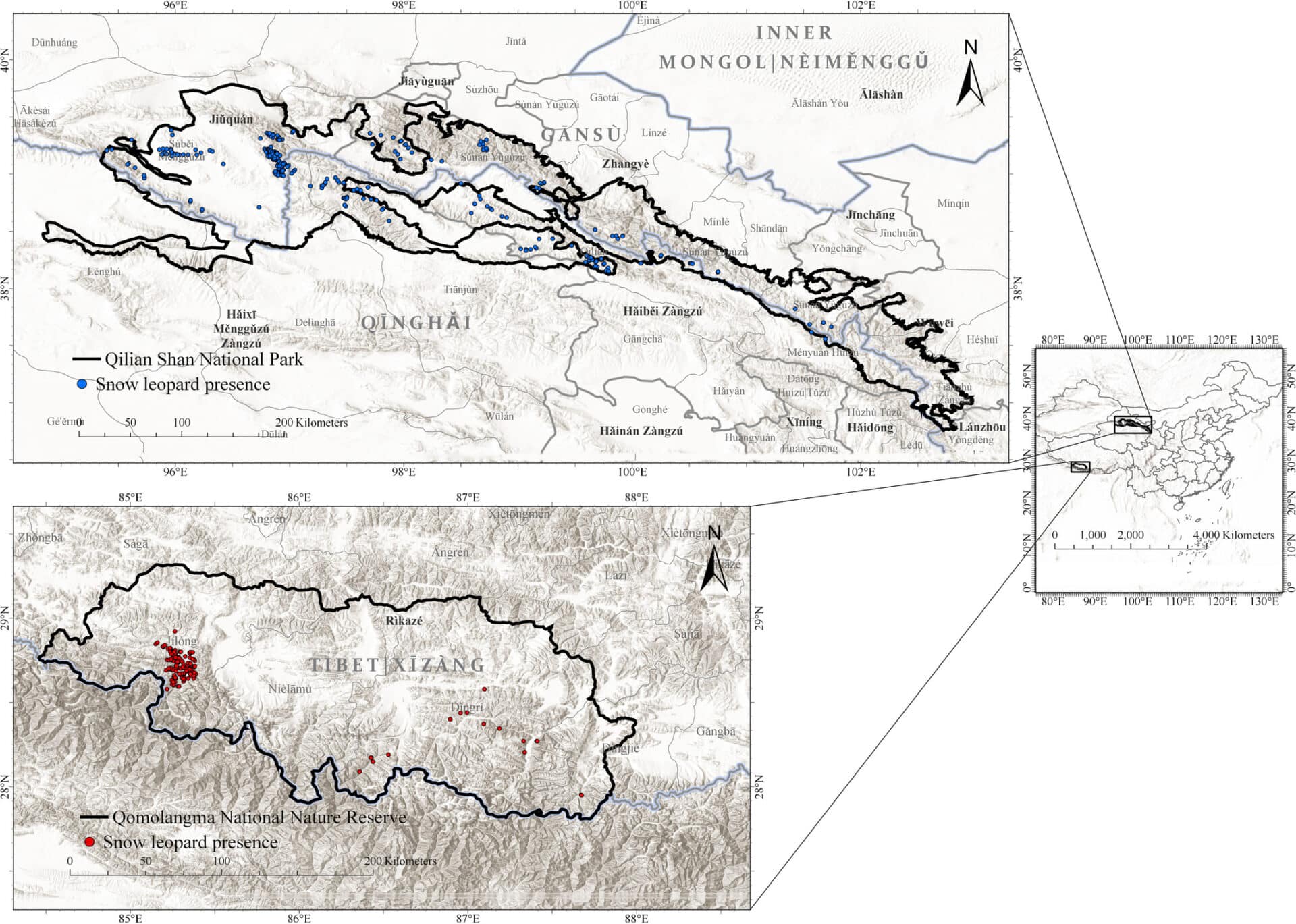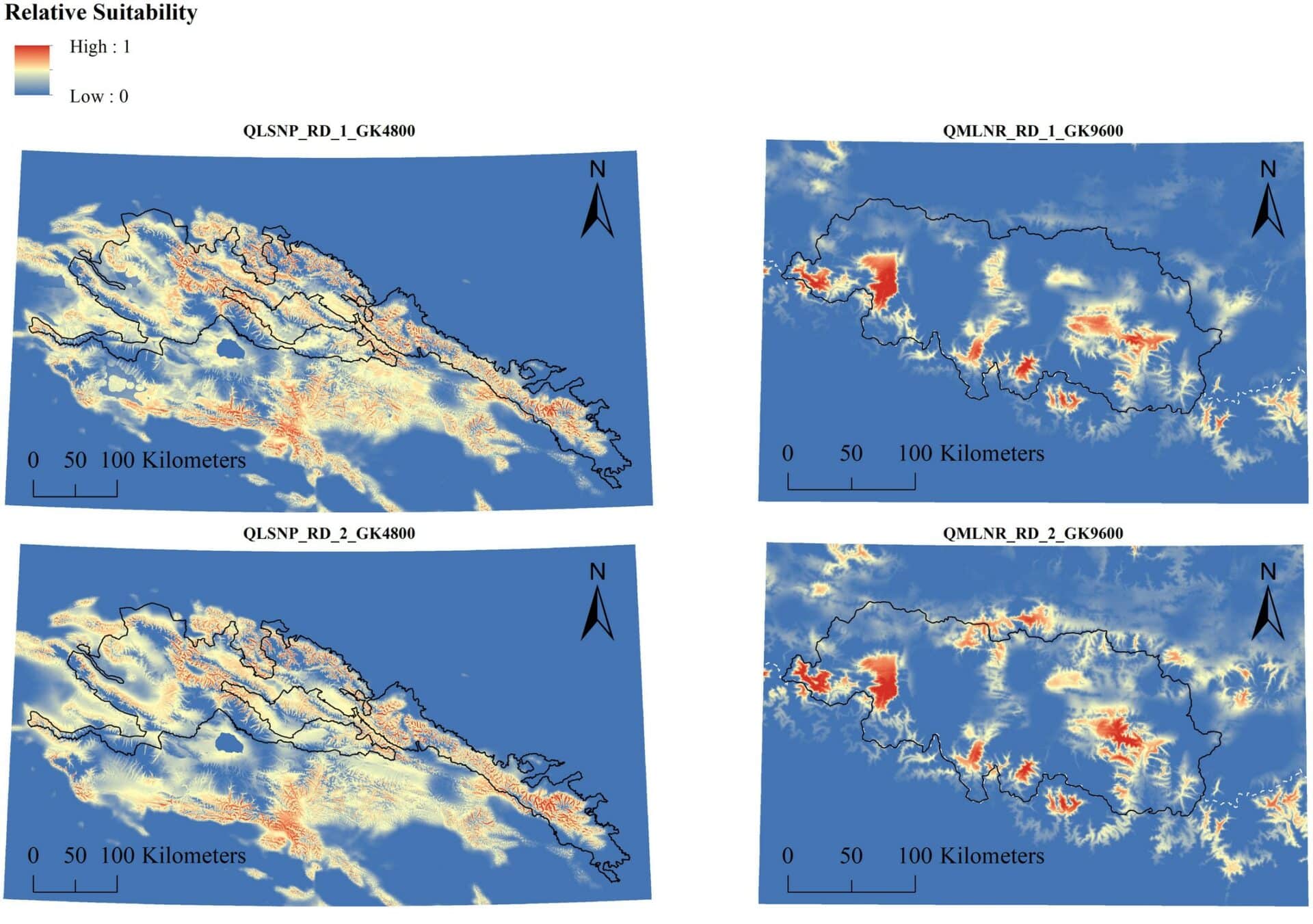Detailed analysis reveals key differences in landscape use by snow leopards in two mountainous regions of China
August 5, 2020
August 5, 2020

A snow leopard photo taken using a remote camera trap in the Qilian Mountains, Gansu Province of China. © The Wildlife Institute, Beijing Forestry University, P.R. China
Marwell researchers working with colleagues in China, have found fundamental differences in the ways in which snow leopards use the mountain landscapes in which they occur. Using cutting edge and detailed analyses of snow leopard occurrence in two areas of China, the team assessed the spatial scales over which key features, both natural and man-made, affect snow leopard distributions.
The team used data from remote camera trapping and genetically verified samples collected since 2014 at the edges of the snow leopard range in the Qomolangma (Mount Everest) region of the Himalayas and the Qilian Mountains on the northeast edge of the Qinghai-Tibetan Plateau (see map). Uniquely, the team used data on terrain, human infrastructure, climate and land cover compiled over varying spatial scales from just over 1km to almost 29km. This provided for the first time an assessment of the extent to which these landscape features might impact snow leopards and offer a new understanding about their sensitivity to conservation or other actions in their environment.
It was found that snow leopards in the two distinct areas appeared to behave very differently, highlighting differences in the characteristics of these parts of China, both in terms of the natural environment and climate and their human footprint. In both areas, snow leopards responded to their landscape at both fine scales and relatively broad scales up to 29km. This means that the impact of features, including human activities, are felt over those distances and possibly more. In the Qilian Mountains, the impact of human settlements had the greatest impact overall and was most influential at the greatest distance of 29km. In Qomolangma, the river network configuration and the topographic complexity of the landscape were found to have the greatest effect on snow leopard occurrence, particularly at intermediate spatial scales of between 14-19km. In both regions, climate was shown to be a constant influence, highlighting the sensitivity of the snow leopards and their ecosystems to ongoing climate change.
These findings are critical to furthering our understanding of the habitat niche of snow leopards. As the world undergoes further climatic change and increasing rates of land degradation, we need to use results such as these to develop robust conservation management actions to protect both the magnificent snow leopard as an emblem of the high mountains of Asia, and the fragile ecosystems that support them and provide essential services, such as providing water to over 1.5 billion people in South Asia.
Reference: Atzeni, L., Cushman, S. A., Bai, D., Wang, J., Chen, P., Shi, K., & Riordan, P. (2020). Meta-replication, sampling bias, and multi-scale model selection: A case study on snow leopard (Panthera uncia) in western China. Ecology and Evolution, 10(14), 7686-7712. http://dx.doi.org/10.1002/ece3.6492

A map showing the two areas surveyed for snow leopard in this study: the Qilian Mountains in the north; and Qomolangma (Mount Everest) in the south.

Example model outputs showing the areas of greatest habitat suitability for snow leopard in each area (Qilian mountains on the left; Qomolangma on the right)